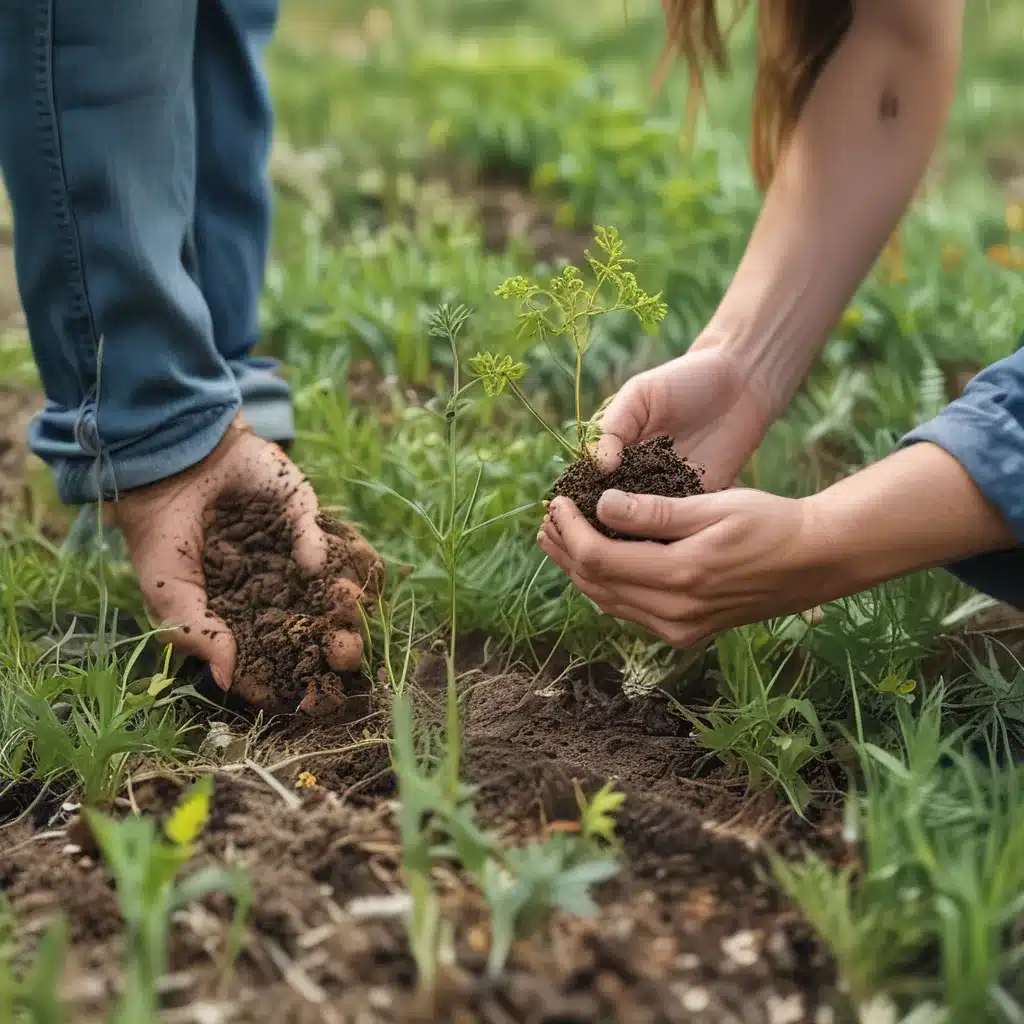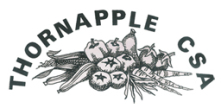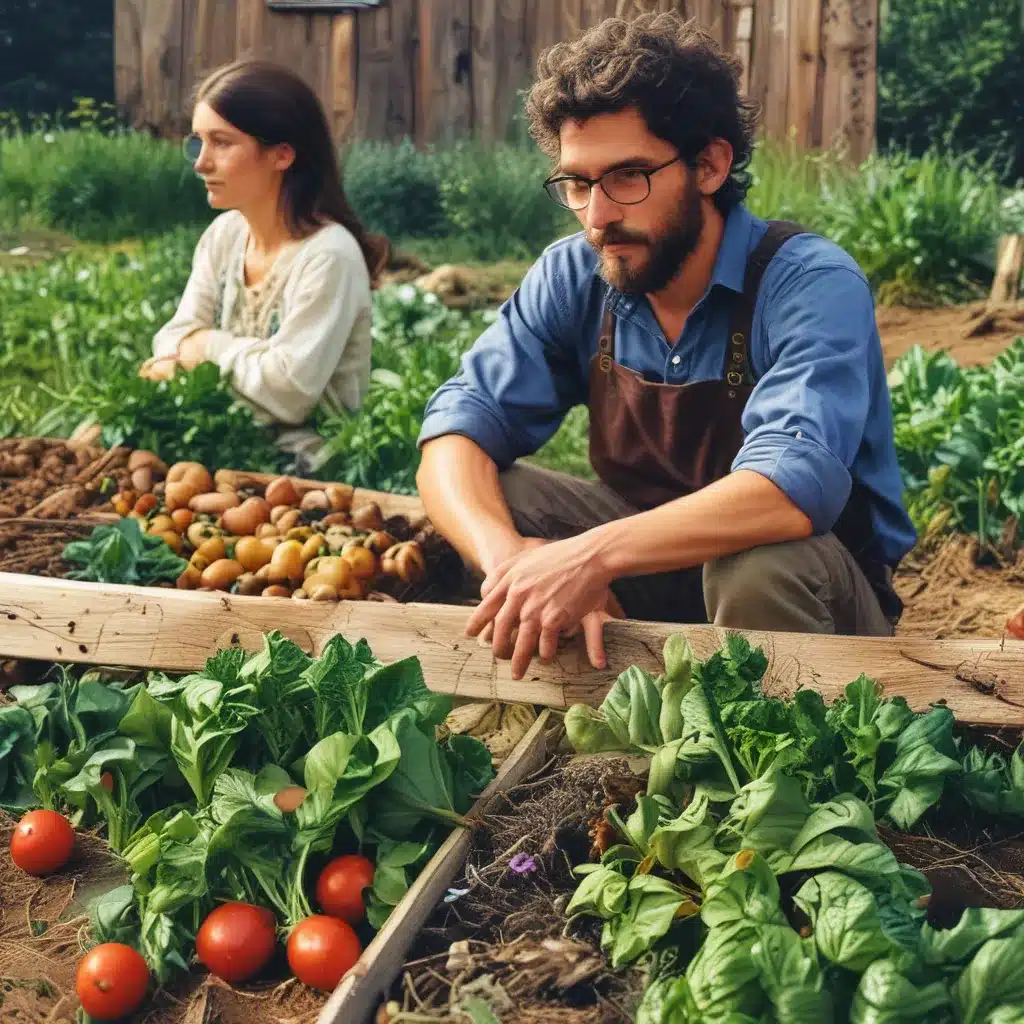
As I step out onto the lush, verdant fields of Thornapple Community Supported Agriculture (CSA), I can’t help but feel a sense of wonder and curiosity. This is more than just a farm – it’s a living, breathing ecosystem teeming with life. And at the heart of it all are the unsung heroes of the soil: the humble, yet invaluable, microbes.
Recent studies have shed light on the crucial role that soil microbes play in maintaining the delicate balance of our agricultural systems. These microscopic organisms, invisible to the naked eye, are the unsung champions of sustainable farming, working tirelessly to nurture the very ground that sustains us.
The Microbial Metropolis Beneath Our Feet
Imagine the soil as a bustling metropolis, with each square inch playing host to a vibrant community of bacteria, fungi, protozoa, and nematodes. These microbes, in their millions, form a complex underground network that is essential to the health and productivity of the land.
The diversity of this microbial community is truly staggering. From the nitrogen-fixing bacteria that replenish the soil’s fertility to the fungi that break down organic matter, each species plays a crucial role in the intricate dance of life beneath our feet.
As I wander through the lush rows of vegetables and vibrant cover crops, I can’t help but imagine the microscopic world teaming beneath the surface. It’s a humbling reminder that the true power of this farm lies not in the visible plants, but in the invisible legions that nourish and sustain them.
Thornapple CSA’s Commitment to Soil Health
At Thornapple CSA, the dedication to sustainable soil management is evident in every aspect of their farming practices. Rather than relying on synthetic fertilizers and pesticides, they have embraced a holistic approach that prioritizes the health and diversity of their soil microbiome.
Through a combination of cover cropping, no-till techniques, and targeted compost applications, the team at Thornapple has created an environment that is teeming with life. By fostering the growth of beneficial microbes, they have built a resilient and productive soil that can withstand the challenges of a changing climate.
“We don’t see our soil as just a medium to grow crops,” explains Sarah, the lead agronomist at Thornapple. “It’s a living, breathing entity that requires our care and attention. By nurturing the microbial communities, we’re not only improving the fertility of our land, but also enhancing the nutrient density and flavor of the food we grow.”
The Microbial Alchemists of Nutrient Cycling
One of the most fascinating aspects of soil microbes is their role in the intricate dance of nutrient cycling. These microscopic alchemists possess the remarkable ability to transform the most basic elements into the building blocks of life.
Take nitrogen, for example. As one of the essential macronutrients for plant growth, it’s a critical component of the soil’s fertility. But in its raw form, nitrogen is largely inaccessible to plants. That’s where the nitrogen-fixing bacteria come in, using specialized enzymes to convert atmospheric nitrogen into a usable form that can be readily absorbed by the plants.
Similarly, the fungi and bacteria in the soil play a vital role in breaking down organic matter, releasing a cornucopia of essential nutrients that can be taken up by the roots of the plants. It’s a perfectly balanced system, with each member of the microbial community contributing its unique skills to the greater good.
The Soil Food Web: A Delicate Balance
The soil food web is a complex and interconnected system, with the microbes at the heart of it all. From the smallest bacteria to the larger predatory nematodes, each organism plays a crucial role in maintaining the delicate balance of the ecosystem.
Imagine the soil as a bustling metropolis, with the microbes as the industrious citizens going about their daily lives. The bacteria and fungi are the primary producers, converting sunlight and organic matter into the nutrients that sustain the entire community. The protozoa and nematodes are the consumers, feeding on the bacteria and fungi and, in turn, providing a rich source of nitrogen for the plants.
But it’s not just a one-way street. The plants themselves play a vital role in this intricate web, exuding sugars and other compounds from their roots that feed the microbes. It’s a symbiotic relationship that has evolved over millions of years, with each member of the community relying on the others for their survival.
The Importance of Microbial Diversity
At Thornapple CSA, the team understands the critical importance of maintaining a diverse and thriving soil microbiome. They know that a monoculture of microbes, much like a monoculture of crops, is inherently vulnerable to pests, diseases, and environmental stresses.
By encouraging a wide variety of microbial species, they’ve created a resilient and self-regulating ecosystem that can adapt to the changing conditions of the land. When one species is challenged, another steps in to fill the void, ensuring that the essential functions of the soil are always maintained.
“It’s like having a portfolio of investments,” Sarah explains with a wry smile. “You don’t want to put all your eggs in one basket, right? The same principle applies to our soil. By nurturing a diverse community of microbes, we’re building a buffer against the unpredictable nature of our climate and the ever-evolving challenges of modern agriculture.”
The Unseen Guardians of Soil Health
As I continue my exploration of the Thornapple CSA, I can’t help but be in awe of the unseen guardians of the soil. These microscopic heroes, working tirelessly beneath the surface, are the foundation upon which the entire farm is built.
From the nitrogen-fixing bacteria to the decomposing fungi, each member of the soil microbiome plays a vital role in maintaining the delicate balance of the ecosystem. And the team at Thornapple CSA has made it their mission to nurture and protect these invisible allies, knowing that the health of their land and the quality of their produce depend on it.
As I prepare to head back, I can’t help but feel a renewed sense of appreciation for the hidden world beneath my feet. The soil, once seen as just a passive medium for growing crops, has revealed itself to be a vibrant and dynamic ecosystem, teeming with life and holding the keys to a more sustainable future for our food system.
And as I walk back towards the Thornapple CSA farmstand, I can’t wait to share my newfound knowledge with the community, inspiring them to appreciate the unseen wonders that lie beneath the surface.



